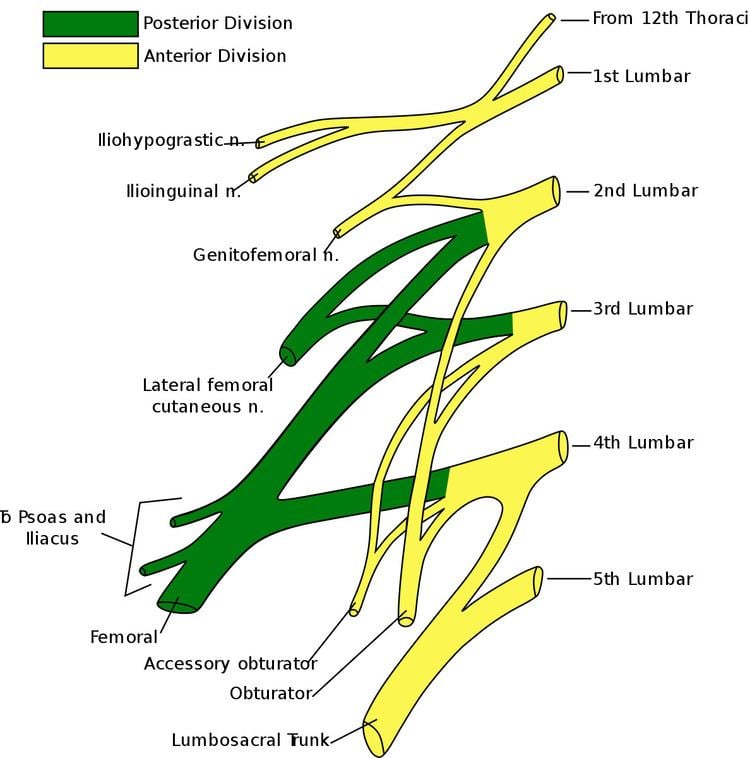Dorlands/Elsevier n_05/12565896 FMA 16483 | Latin nervus ilioinguinalis TA A14.2.07.006 | |
 | ||
Innervates Skin over the root of the penis and upper part of the scrotum (male), skin covering the mons pubis and labium majus (female) | ||
The ilioinguinal nerve is a branch of the first lumbar nerve (L1). It separates from the first lumbar nerve along with the larger iliohypogastric nerve.
Contents
It emerges from the lateral border of the psoas major just inferior to the iliohypogastric, and passes obliquely across the quadratus lumborum and iliacus. The ilioinguinal nerve then perforates the transversus abdominis near the anterior part of the iliac crest, and communicates with the iliohypogastric nerve between the transversus and the internal oblique muscle.
It then pierces the internal oblique muscle, distributing filaments to it, and then accompanies the spermatic cord through the superficial inguinal ring. Its fibres are then distributed to the skin of the upper and medial part of the thigh, and to the following locations in the male and female:
Note that the ilioinguinal nerve does not pass through the deep inguinal ring, and therefore it only travels through part of the inguinal canal.
Variations
The size of this nerve is in inverse proportion to that of the iliohypogastric.
Occasionally it is very small, and ends by joining the iliohypogastric; in such cases, a branch from the iliohypogastric takes the place of the ilioinguinal, or the latter nerve may be altogether absent.
Ilioinguinal nerve block
The ilioinguinal nerve is clinically important when considering an ilioinguinal or iliohypogastric nerve block.
The indications for nerve block include anaesthesia for procedures involving the abdominal region such as inguinal herniorrhaphy or pain relief for procedures such as a c-section. Ropivacaine is an example of the anaesthetic which may be used for the block.
